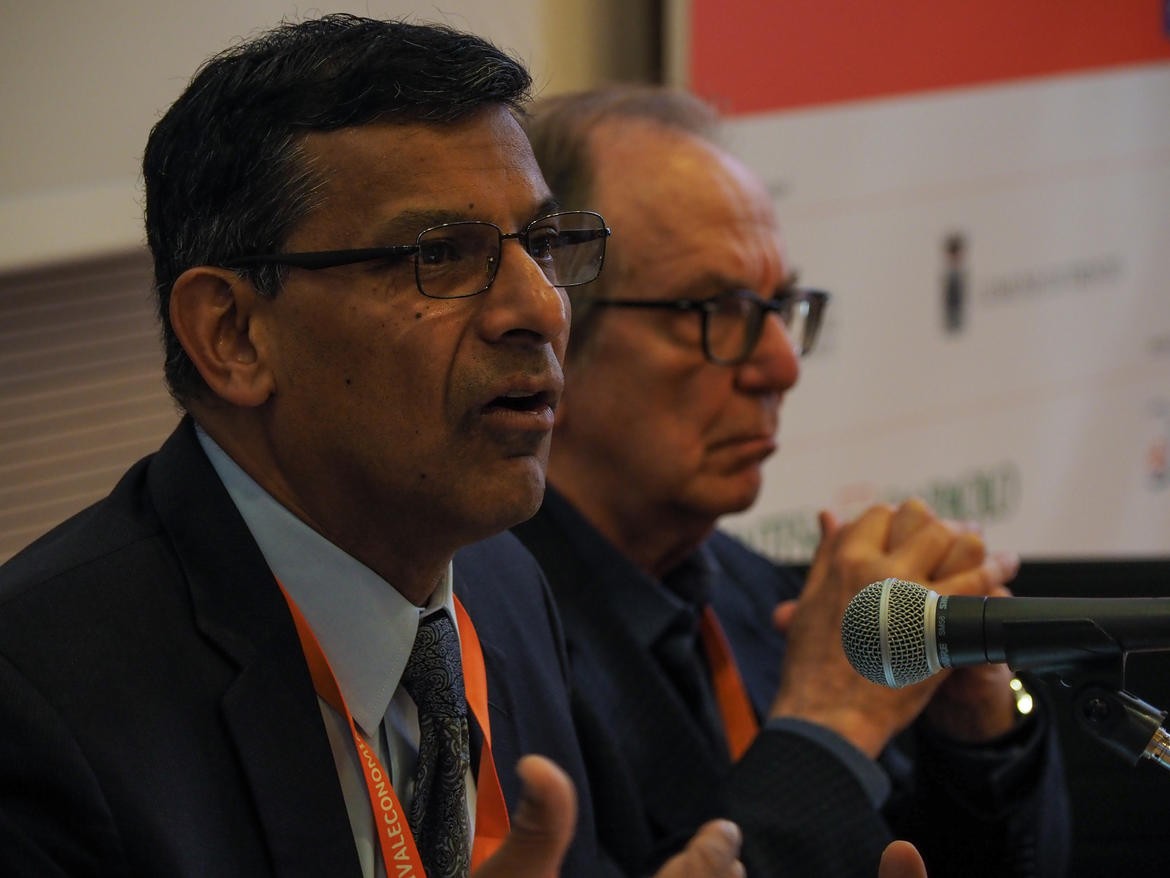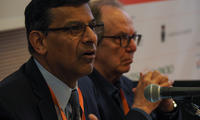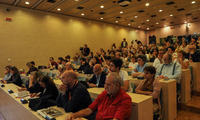
On the last day of the 2019 Trento Economics Festival, Raghuram G. Rajan presented on his book, “The Third Pillar: How Markets and the State Leave the Community Behind.” In this book, he attempted to understand why capitalism worked in industrial countries and why there is so much dissatisfaction with the way it works. He described capitalism as a balancing act with three pillars: the state, the market and the community. When the pillars get out of balance, we must find ways to rebalance them by involving some type of societal change. When the rebalancing does not take place, Rajan stated that is when we feel a deep sense of dissatisfaction.
When Rajan referred to the state, he meant the executive, the judiciary and the legislature which historically were supposed to provide the functions of security and justice but, it also prepares people for the market. He explained how the state began to provide more functions such as schooling, providing post-market support and creating social safety nets like social security. However, he argues that the third pillar, the community is neglected. This third pillar is very important because it fills in the holes left by the states and the markets.
Rajan explained that labor mobility is much lower than we think and therefore, where someone grows up is an important indicator of how they perform later in life. One instance where Rajan highlighted that the community had a significant role is the populist movement in the late 19th century in the United States. The movement wanted to break up big conglomerates and as a result, change happened. The movement resulted in the Sherman Anti-Trust Act, a number of regulations on various forms of industry and the direct election of senators. When the state becomes too conducive, democratic protest movements act to open up the state once again.
Rajan emphasized that democracy tries to broaden the spheres of influence and concentrated economic power. He said that too much concentration of power is problematic. The biggest changes that affected the markets, states and communities were the Information and Communication Technologies (ICT) Revolution. For the markets, the ICT revolution expanded trade across the world with much greater supply chains. What this has done is exposed manufacturing work in industrial countries to more competition. Service work has also benefited because there is a bigger market.
Inequality has had more diverse effects. Some sectors of the economy and some regions in particular have benefited tremendously from the ICT revolution while other sectors and regions have actually been hurt by the revolution. The introduction of technological changes has increased the return to the importance of good schooling. The community has weakened due to the fact that different communities are affected differently. Rajan stated that we begin to see the emergence of vicious cycles and there is not much power to reverse this. We see a breakdown of the social aspect and the community.
Therefore, Rajan said that a community that is prepared for the society of tomorrow must turn to, inclusive localism. Localism has effective community leadership that includes keeping and developing good people. The local powers have to act and engage. For example, developing school curricula and implementing safety nets. Engagement in the community has to be both direct and virtual and the infrastructure must have both virtual and physical connectivity. These communities have to decentralize their funding that contrasts with centralized funding or “place-based policies.” Rajan ultimately ended this presentation by leaving the audience with the idea that each community has its own specific set of problems and the problems can only be fixed when the community becomes able to recognize their own unique issues.
Website: https://2019.festivaleconomia.eu/home
Twitter: https://twitter.com/economicsfest
Facebook: http://www.facebook.com/festivaleconomiatrento
Instagram: https://www.instagram.com/festivaleconomia/










